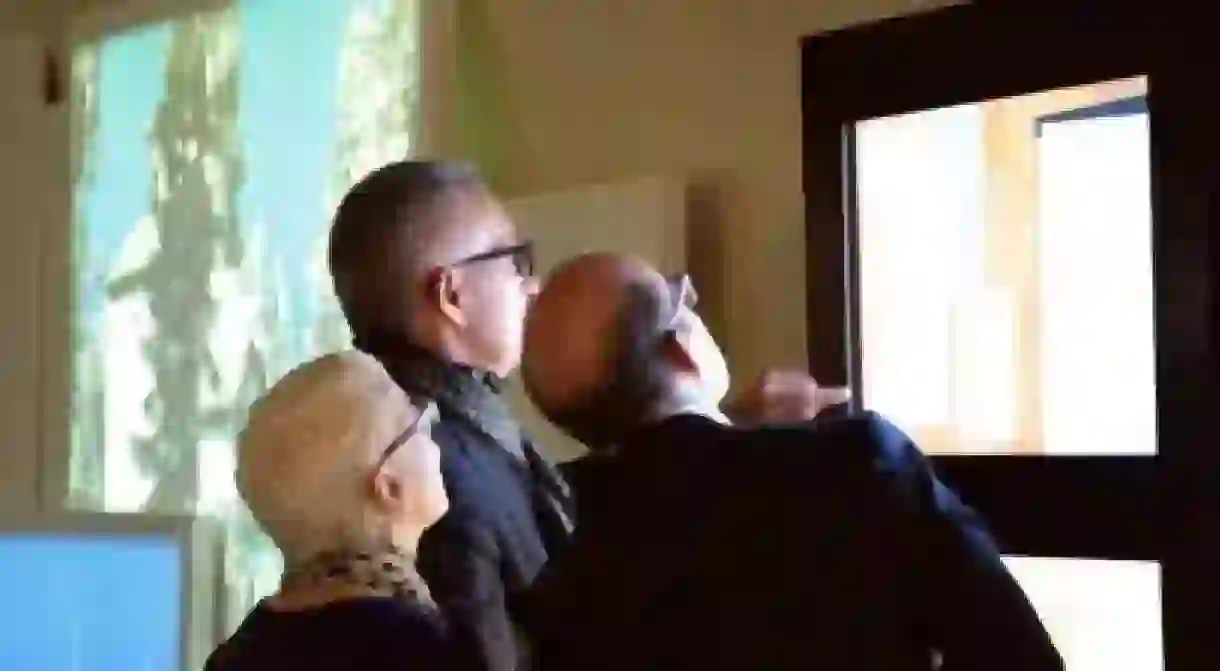The Daugavpils Rothko Art Centre, The Pride of Latvia

The Rothko Art Center in Latvia is the first permanent Mark Rothko installation in Eastern Europe. Housed in the Daugavpils Fortress, this unique project not only celebrates the art of Rothko in his hometown, but also promotes the city of Daugavpils.

The Rothko Art Center is housed in the Daugavpils Fortress, a unique cultural monument. Built in the beginning of the 19th century, the Artillery Arsenal is the best preserved building of the Fortress complex, offering features ideal for displaying art works due to its compositionally clear design and natural lighting. Rothko was born in 1903 in the historical city of Dynaburg, which was then called Dvinsk by its Russian rulers. The city was renamed as Daugavpils by the newly independent Latvian state in 1920. Rothko was ten when the growing anti-Jewish sentiment resulted in his family fleeing to the U.S., where he grew up, becoming one of the most famous abstract artists of the 20th century.
This historic two‐story U form building of red baked bricks built in the Empire style is designated as a state-level historical architecture site. It fulfilled its function as an artillery arsenal through the middle of the 20th century. In 1947 the Dvinsk Military Aviation Technical School was formed inside Daugavpils Fortress and the Cadets’ barracks were located in the building from 1976 till 1993. After the military school had been transferred to Russia, the arsenal building was not commercially used for many years. Combined with the world-famous figure Mark Rothko, the concept of the center was to create a platform to help develop the city. The technical project was designed in 2008 by the architectural offices of ARHIS and its construction began in 2011, finishing in late 2012. The historical building and its surrounding grounds, as well as the layout of the Arsenal Building, were conserved as much as possible during construction, which has resulted in the reconstruction project being nominated for the Latvian Award for Architecture in 2012.

The initial idea for the building came about during the centennial collection celebration for Rothko in 2003. This was the last time that Rothko’s paintings could be seen in Latvia at the Latvian National Art Museum in Riga. The museum had provided a rather dark exhibition space for the paintings, as it was known that Rothko preferred to paint in dark conditions in order to create a twilight-like atmosphere. The concept of the display was to show how the artist evolved his signature style, as requested by the Washington National Gallery, with whom the exhibition had been arranged. A unique collection of 40 museum quality reproductions of Rothko’s works from different periods was created in close cooperation with the artist’s son Christopher Rothko. This exhibition was part of the celebration of Rothko’s 100th birthday, which encouraged the community, local artists and students to participate in a number of events. Rothko’s children Kate Rothko Prizel and Christopher Rothko collaborated with leading authorities in the modern art world, experts on Rothko painting, such as David Anfam and Sheldon Nodelman, curators from the National Gallery of Art in Washington and the Beyeler Foundation in Basel. The success of exhibition led to talks for a project to provide the Daugavpils region with long-term development prospects.
On the 24th April 2013, the Daugavpils Mark Rothko Art Center opened as a multi-functional center for culture, art and education. Alongside 41 museum-quality prints, there are six Rothko originals to be seen. There is also a library, a video room and a section of the center containing equipped studios for student residency programs. It also houses a Rothko ‘Room of Silence’ – its function to create a meditative space with a similar atmosphere to that of the Rothko Chapel in Houston.

Rothko became a giant of Modern art through his characteristic style, a seemingly simple, but arresting juxtaposition of blocks of color. In 2012 a large-scale painting of his fetched just over £56.8 million at a New York auction, setting a record for any contemporary work of art. That canvas titled Orange, Red, Yellow (1961) bears some resemblance to one of the six original works that make up the centerpiece of the museum collection, all donated by the Rothko family. Part of the collection includes works from the annual Mark Rothko Plein Air, which is one of the main cultural events held in Daugavpils. Artists come from all over the world to celebrate the birthplace of Rothko, and many artworks are created during the event. The works were donated by more than 100 artists from Lithuania, Russia, Ukraine, Poland, Germany, Denmark, France, Italy, United Kingdom, Japan, Norway, USA and elsewhere. Only having been open for a few months, The Rothko Art Center has so far been a success for the redevelopment for the Daugavpils Fortress and is drawing in visitors and artists from all over the world to the city.













